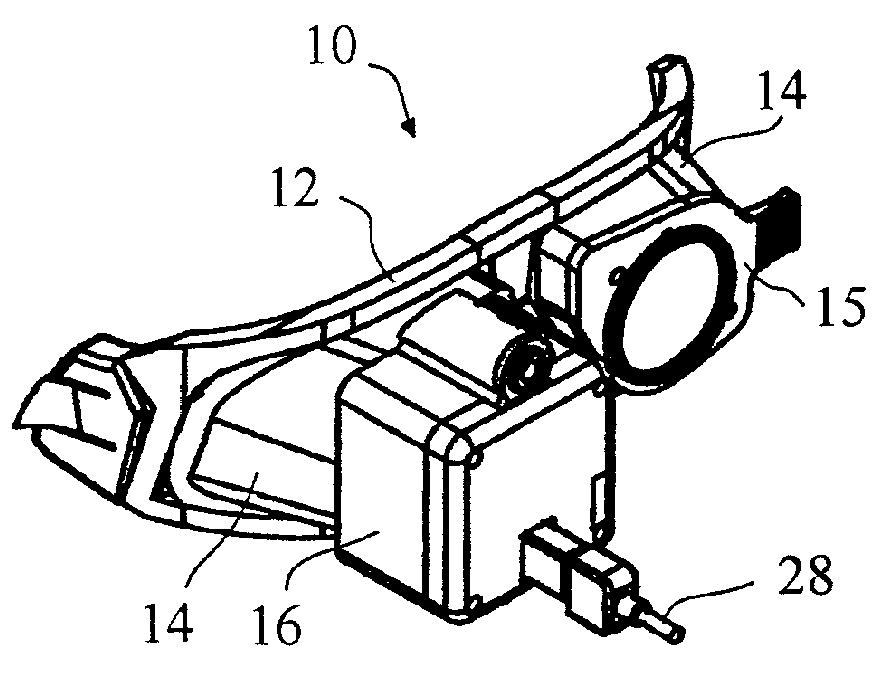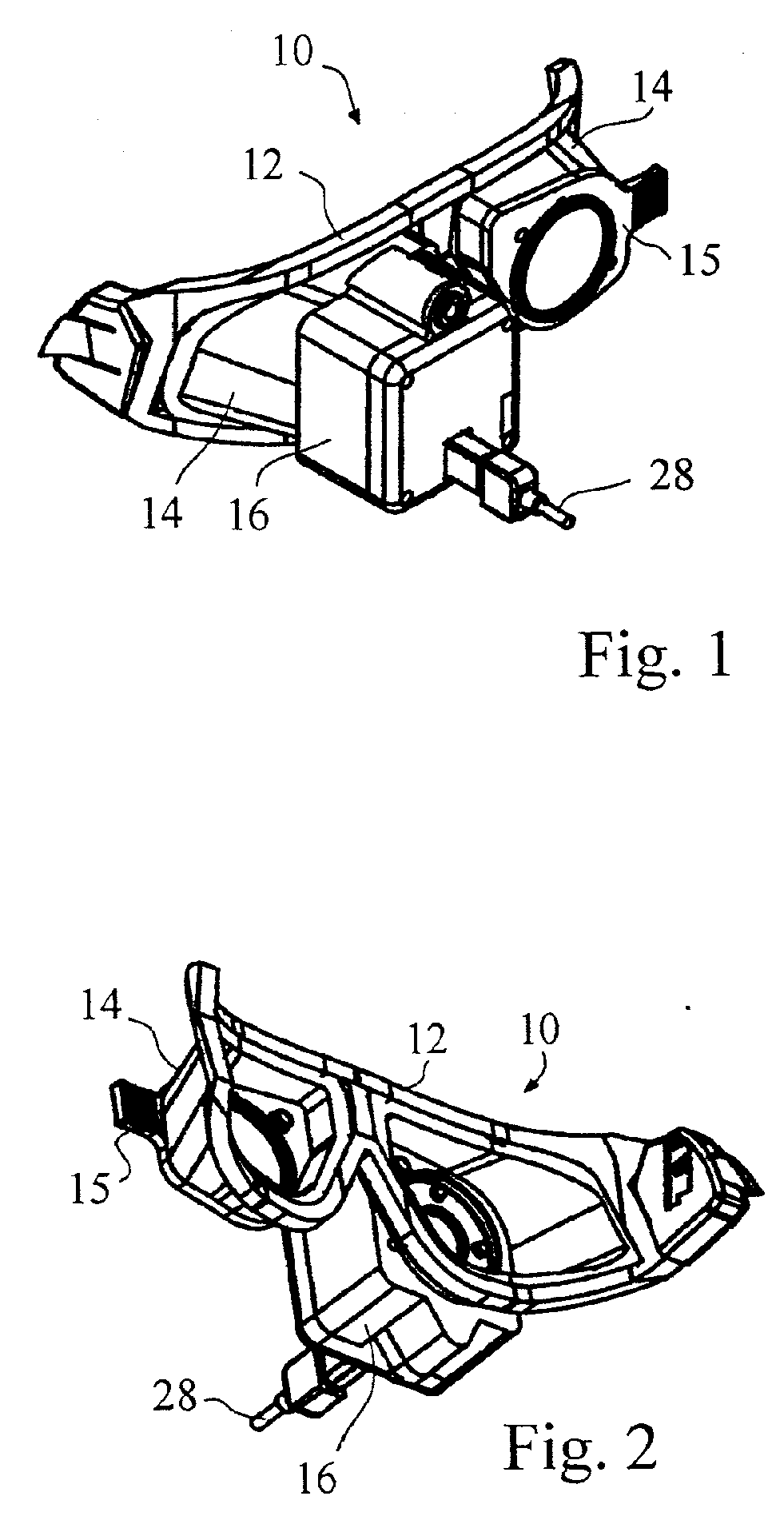Portable video oculography system with integral light stimulus system
a technology of light stimulus and video oculography, which is applied in the field of clinical eye tracking systems, can solve the problems of inability to remove all head movements, significant inaccuracy in the measured eye movement, and systems are particularly unsuitable, so as to improve system accuracy, eliminate any gross adjustment, and reduce inertia.
- Summary
- Abstract
- Description
- Claims
- Application Information
AI Technical Summary
Benefits of technology
Problems solved by technology
Method used
Image
Examples
Embodiment Construction
[0041]FIGS. 1-4 illustrate a goggle headset for a VOG system 10 according to the present invention. The system 10 is a goggle based system using a goggle frame or base 12 for fitting onto the patient. The base 12 is essentially a frame for swimming or diving goggles such as manufactured by Technisub S.p.A., and described in U.S. Pat. No. 5,915,541 which is incorporated herein by reference. The base 12 provides a skirt for distributing the forces around the face and which conforms to the face, and which can be critical for occluded VOG systems. The occluded systems simply refer to systems where external light is blocked out for at least one eye. The base 12 is far more universal than an individual face formed mask.
[0042] Each eye portion of the base 12 includes a mounting member 14. The mounting members 14 are used for constructing any of a variety of front mounted VOG systems in accordance with the present invention. One member 14 may be left open to provide a field of view of at l...
PUM
 Login to View More
Login to View More Abstract
Description
Claims
Application Information
 Login to View More
Login to View More - R&D
- Intellectual Property
- Life Sciences
- Materials
- Tech Scout
- Unparalleled Data Quality
- Higher Quality Content
- 60% Fewer Hallucinations
Browse by: Latest US Patents, China's latest patents, Technical Efficacy Thesaurus, Application Domain, Technology Topic, Popular Technical Reports.
© 2025 PatSnap. All rights reserved.Legal|Privacy policy|Modern Slavery Act Transparency Statement|Sitemap|About US| Contact US: help@patsnap.com



